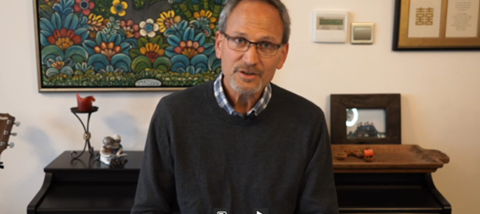
When our church first starting live-streaming services, we simply took what happened on a normal Sunday and replicated it online. Very quickly, we discovered this wasn't working! Over the past weeks, we've modified our approach. Here's why.
When church happens online, people come prepared differently. For evangelical churches like ours, people are often preparing to focus for anything from 1-2 hours. They think about what to wear, they eat first and go to the toilet - all so they can focus for an extended period of time on being with other people. Online, it's completely different and there's the potential to simply click away and leave at any moment.
The physical environment is also different. When meeting in person everyone is facing one direction. In person it’s a bit awkward to eat, crinkle a wrapper, read a book, or have a phone conversation during the service. But online you are looking at a small screen and there are many distractions - like when your 2 year-old starts throwing a ball at your head.
Everything and everyone is more staged online. You only show what’s on camera. Congregants can only guess what colour your trousers might be (if you're wearing any). And participants can choose to only show a small portion of themselves. They might have their camera switched off, and only be listening in. They might make an occasional comment using a chat function, or they might remain completely silent. This means social support is very different. When meeting in person, a group of people are likely to be actively listening, praying with you and joining you in your "Amen".
All these factors and more mean we've radically shifted our approach to conducting church services online. I don't have the luxury of addressing our people for 40 minutes (it doesn't work). But the good news is, we preachers can still deliver something of great spiritual value in 15 minutes, and we can do it in a close, personal and intimate way:
1. Preach Shorter
Think in terms of a 12-18 minute sermon, not 35-40 minutes.
2. Preach up-close and personal
You’re not on stage. You’re up close. People can see your eyes, your face, your smile. Speak softer. Look into the camera. Don’t wave your arms. Don’t shout. Don’t pace back and forth.
3. Have a conversation
Think of your sermon more as a “fireside chat” with friends.
4. Invite people into your home
Let people see the pictures on your wall, your family, your pets, your office, your sofa and your kitchen.
5. Keep things moving
Have your main camera, and then a side-angle to mix things up. Vary your scenes, props, positions and camera angles. People get bored quicker online.
6. Don’t repeat yourself
People are paying attention to every sentence.
7. Prepare differently
Prep like a movie-producer not a preacher from a pulpit. Think location, props, scenes. Are you walking? Sitting? Standing? Inside? Outside?
8. Plan ahead
Deadlines are different - get your sermon recorded by Thursday so your people have time for post-production - adding words on the screen, improving the sound, getting it ready to put online.
9. Trust your young people like you never have done before!
If you’re a digital immigrant, listen to digital natives in your church. Digital natives are people who grew up knowing about this stuff and can't remember a time before the internet. Trust them. They know what they're talking about.
10. Take the limits off
Don’t limit yourself to one weekly sermon. You can produce daily five-minute devotionals, or prayers. Aim to share content regularly and find a rhythm of the day - particularly as people may be on lockdown and the days can blur.
John Willison is the pastor of Abundant Grace International Fellowship in Shanghai, China.






























